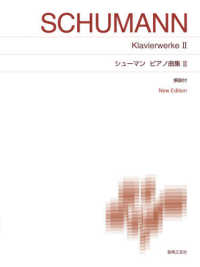基本説明
This volume examines an atypical outcome of movement operations, in which multiple copies of the moved element are pronounced. This situation manifests itself robustly in Nupe, a Benue-Congo language of Nigeria. The existence of movement-driven multiplicity, however, raises a tension of the descriptive-explanatory variety. In order to achieve both measures of adequacy, movement theory must be supplemented with an account of the conditions that drive and constrain multiple pronunciation. This book catalogs these conditions, while bringing to light numerous undocumented aspects of Nupe.
Full Description
Displacement is a fundamental property of grammar. Typically, when an occurrence moves it is pronounced in only one environment. This was previously viewed as a primitive/irreducible property of grammar. Recent work, however, suggests that it follows from principled interactions between the syntactic and phonological components of grammar. As such, the phonetic character of movement chains can be seen as both a reflection of and probe into the syntax-phonology interface. This volume deals with repetition, an atypical outcome of movement operations in which displaced elements are pronounced multiple times. Although cross-linguistically rare, the phenomenon obtains robustly in Nupe, a Benue-Congo language of Nigeria. Repetition raises a tension of the descriptive-explanatory variety. In order to achieve both measures of adequacy, movement theory must be supplemented with an account of the conditions that drive and constrain multiple pronunciation. This book catalogs these conditions, bringing to light a number of undocumented aspects of Nupe grammar.
Contents
1. Preface; 2. List of abbreviations; 3. Chapter 1. Overview and orientation; 4. Chapter 2. Prefatory remarks on Nupe grammar; 5. Chapter 3. Bare root verbal repetition: Repetition via morphophonological conditioning; 6. Chapter 4. Predicate cleft: Repetition via parallel chain formation; 7. Chapter 5. Lower copy resumption: Repetition via prosodic conditioning; 8. Chapter 6. Repetition and beyond; 9. References; 10. Index


![The Gale Encyclopedia of Dermatology / [Project Editor : Lisa Kumar]](../images/goods/../parts/goods-list/no-phooto.jpg)





